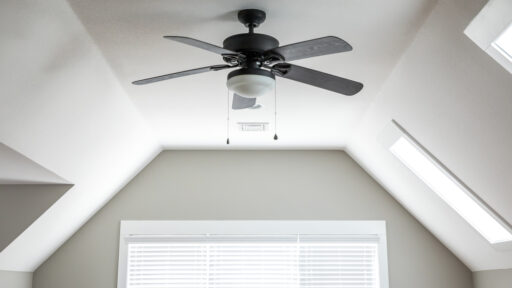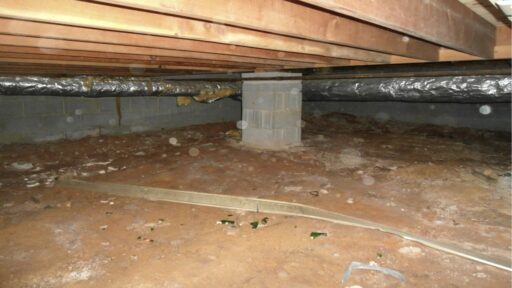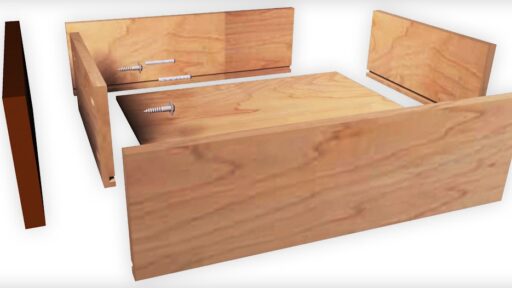One of the most essential functions of your air filter is to maintain your indoor environment clean, safe, and comfortable. While it may seem like a minor component, it directly affects your HVAC system’s performance and the quality of the air you breathe. Many homeowners overlook air filter maintenance until something goes wrong — by then, it’s often too late. A neglected filter can lead to reduced airflow, rising energy bills, or even respiratory issues. That’s why recognizing the signs early can prevent long-term problems. Let’s explore the most common indicators that your air filter needs replacement, cleaning, or an upgrade.
Visible Dirt and Dust Buildup
What to Look for on the Surface
One of the first visual signs that your air filter needs attention is the accumulation of dirt and debris on the surface. When a filter becomes gray or even blackened with dust, it’s no longer functioning efficiently. This grime is a combination of airborne particles, pollen, pet dander, and other pollutants that your filter is designed to capture. While it’s good that these particles aren’t circulating through your home, a clogged filter means it’s time for a new one. If left in place too long, the buildup can create airflow restrictions and affect HVAC performance. Checking your filter monthly can help you catch this issue before it becomes a larger problem.
How to Test the Filter with Light
A simple test you can perform involves holding the filter up to a light source to assess transparency. If you find that light struggles to pass through or is completely blocked, that’s a strong indication that the filter is overly dirty. A clean filter should allow light to shine through most of its surface, showing that it’s still porous enough to permit airflow while trapping contaminants. This test only takes a few seconds and can help you decide whether a replacement is necessary. It’s beneficial if you’re unsure how long the filter has been in place. Relying on visual cues and this quick light test can prevent costly issues down the line.
Why This Matters for Your System
When dirt accumulates on your filter, it doesn’t just stay there — it creates a physical barrier that obstructs airflow through your HVAC system. This forces your system to work harder to push air through, which increases wear and tear over time. In severe cases, your HVAC motor could overheat or shut down prematurely due to stress. Reduced airflow also means it takes longer to achieve desired temperatures indoors, making your home feel less comfortable and inconsistent with temperatures. In addition, your utility bills may rise as your system consumes more energy to compensate. Simply replacing a dirty filter can reverse these effects and restore proper performance.
Reduced Airflow or HVAC Performance
Signs Coming from Your Vents
Should the air from your vents feel unusually light or sluggish, uneven, it could be due to a clogged air filter, reducing the system’s overall airflow. This reduced airflow makes it difficult for the HVAC unit to work to push heated or cooled air around your home correctly. You might notice that certain rooms take longer to reach the desired temperature or that some areas never quite feel comfortable. These inconsistencies often point back to airflow problems rooted in a neglected filter. The more complex your system has to work to circulate air, the more strain it puts on its components. Addressing the issue at the filter level can restore balanced performance throughout your home.
How System Behavior Changes
A dirty air filter can alter your HVAC system’s behavior in noticeable ways, such as longer operating times and more frequent cycling on and off. These changes happen because the system is working overtime to compensate for the blocked airflow. In winter or summer months, when the system runs most often, this can cause it to struggle with maintaining consistent indoor temperatures. You might hear the system start and stop more often, which not only reduces efficiency but also increases wear on mechanical parts. Over time, this pattern can contribute to higher maintenance needs or even early system failure. Catching these behavioral shifts early can save you from unexpected repair costs.
The Risk of Ignoring the Problem
Ignoring poor airflow and performance issues can result in damage to your HVAC unit and disrupt your day-to-day comfort. A filter that’s not replaced in time will continue to degrade system efficiency and place unnecessary strain on critical components. This can lead to overheating, frozen coils, or fan motor failure, all of which are costly to repair. In addition to mechanical problems, poor airflow affects air quality, making your home less healthy to live in. Minor issues can snowball into bigger, more expensive ones if not addressed promptly. Keeping the filter clean and monitored can prevent all of these outcomes.
Rising Allergy Issues and Dust Accumulation Indoors
Health Clues from Your Body
If you’re experiencing an increase in allergy-like symptoms such as sneezing, coughing, congestion, or itchy eyes, your air filter may be to blame. A clean filter helps remove allergens and irritants from the air, but a clogged or ineffective one lets them pass right through. When these particles circulate indoors, they can trigger or worsen allergies and other respiratory issues. Even people without known allergies might begin to feel uncomfortable in an environment with excessive airborne pollutants. Pay attention to how your body feels in your home — especially if symptoms subside when you’re away. This is often one of the earliest indicators of poor indoor air quality.
What Dust Tells You About Your Air
An increase in dust accumulation around your home can also be a red flag. If you find yourself dusting more often or notice that surfaces seem dirtier soon after cleaning, your filter may not be doing its job. A filter that’s too dirty or not rated for satisfactory particle capture allows dust and pollutants to circulate freely. Over time, this can lead to buildup in air ducts, on furniture, and in carpets. The result is not only a dirtier home but also a more difficult one to keep clean. Monitoring dust levels can give you a strong visual cue about your air filter’s performance.
When to Consider a Better Filter
If you consistently struggle with allergy symptoms or dust despite regular filter changes, your current filter may not be providing adequate filtration. In such cases, it may be time to consider a filter with a higher MERV rating, which is better at capturing smaller particles. Using these air filters helps reduce airborne pollutants and improve air quality by removing allergens, pollen, and fine dust more efficiently. This is especially important in households with pets, children, or individuals with respiratory conditions. Choosing the right filter type for your environment ensures you get the best performance possible. Sometimes, upgrading the quality of the filter is more impactful than just replacing it frequently.
Higher Energy Bills
What to Watch for on Your Statement
A noticeable increase in your energy bills without a change in household behavior can point to HVAC inefficiency. One of the most common, yet often overlooked, culprits is a dirty air filter. When airflow is restricted, your system must run longer to achieve the same level of comfort. This longer runtime directly translates to higher energy consumption and increased utility costs. Reviewing your energy statements over a few months can help you identify unusual spikes. Consistently high energy usage is often a symptom of an underlying airflow problem.
How a Filter Impacts Consumption
The connection between a dirty air filter and energy use is simple but essential. As airflow becomes restricted, the HVAC system loses its ability to regulate temperature efficiently. It compensates by increasing runtime, which consumes more electricity or fuel. Over time, this adds up — especially during extreme weather when the system is already under stress. You might think your HVAC is just getting old or less efficient, when in reality, the filter is the issue. Regular maintenance can help you avoid these false assumptions and unnecessary expenses.
The Financial Consequences of Delay
Putting off filter replacement doesn’t just cost you more on your monthly bill — it can also result in expensive repairs or early system replacement. Heating and cooling systems rely on maintaining certain pressure levels to operate efficiently and increase airflow ranges. A blocked filter disrupts this balance, causing parts to wear out faster. These repairs can be far more costly than the price of a simple filter. Being proactive with your filter schedule is one of the easiest and most effective ways to keep your system running efficiently. It’s a small habit that yields significant savings over time.
Filter Age or Time Since Last Change
General Guidelines for Replacement
Most standard 1-inch filters should be replaced every one to three months, depending on usage and air quality conditions. This guideline applies to average homes without special air quality concerns. If you haven’t changed your filter within that timeframe, it’s likely no longer performing effectively. Filters don’t have an infinite lifespan — they collect debris until they can’t hold any more. Overusing an old filter leads to reduced air quality and HVAC performance. Following a regular schedule ensures your system stays efficient and your air remains clean.
Factors That Accelerate Wear
Certain conditions in your home can cause filters to trap dirt at a faster rate and demand more frequent swapping. If you have pets, smoke indoors, or live near a construction site or high-pollen area, your filter will accumulate contaminants more quickly. These environmental factors introduce additional particles into the air, which the filter must capture. Homes with higher occupancy or frequent visitors may also see quicker buildup due to increased human activity. Recognizing these influences can help you adjust your maintenance schedule accordingly. A more demanding environment calls for more frequent filter checks.
How to Keep Track and Stay Ahead
To avoid forgetting, consider setting a calendar reminder or placing a sticker with the replacement date near the filter housing. Some smart thermostats can also notify you when it’s time for a change based on runtime. Staying consistent with replacements keeps your system running efficiently and prevents unexpected performance issues. Even if your filter doesn’t look filthy, it may still be past its effective lifespan. A little organization goes a long way when it comes to air quality and energy savings. Developing a simple routine for filter maintenance will pay off in comfort and cost.
Final Thoughts
Keeping your air filter in good condition is far more than routine maintenance — it’s fundamental to maintaining the health of your HVAC system and the air you breathe. Ignoring signs like dirt buildup, poor airflow, or increased allergy symptoms can lead to larger issues that are expensive to fix. On the other hand, proactive maintenance and knowing when to upgrade your filter can dramatically improve your comfort and reduce your energy costs. Your air filter might be small, but it has a significant impact on the efficiency of your entire home. Pay attention to the warning signs, and your system will reward you with better performance, cleaner air, and fewer surprises down the road.








